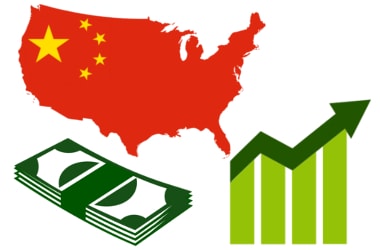International Economy - Current Affairs for April, 2017
International Economy Current Affairs for April, 2017
Month wise coverage of International Economy Current Affairs helps you improve your general knowledge and prepare for all competitive exams like IBPS, Bank PO, SBI PO, RRB, RBI, LIC, Specialist Officer, Clerk, SSC, UPSC, Railway etc. This section is updated daily with the most important events.Preparing International Economy Current Affairs April, 2017
1. Read the most important International Economy Current affairs and facts here. 2. Take practice test of our International Economy MCQ and Objective type questions. 3. Clear any quiz, GK, job interview or competitive exam on current affairs.
- Month & Year
▼ Spain tops WEF list [04-19-17]
 Spain has, once again, topped the World Economic Forum's (WEF) list on travel and tourism competitiveness. Spain has, once again, topped the World Economic Forum's (WEF) list on travel and tourism competitiveness.
WEF's biennial report is based on the theme 'paving the way for a more sustainable and inclusive future'. France and Germany continue to be ranked second and third respectively, depicting no change from the 2015 edition.
Surprise entry in the top five countries is Japan, which is ranked at number four, a jump of five places from the last time the rankings were released.
Japan is said to have a great tourist inflow because of two-fold reasons of 'unique cultural resources and business'.
India was ranked at 40, a considerable jump of 12 places from 2015. Asia-Pacific also emerged as the most-improved region.
War-torn country Yemen was ranked the last of the analysed nations, at 136, still a jump of two places. African countries Burundi and Chad were ranked 134 and 135, respectively.
Azerbaijan at 71st position is one of the most improved economies this year, rising 13 places in the global rankings.
According to the report, the travel and tourism industry contributed $7.6 trillion to the global economy (10.2 per cent of global GDP) and generated 292 million jobs (1 in 10 jobs on the planet) in 2016.
|
▼ China's economy beats government target [04-18-17]
 China’s economy beat the government target and grew by 6.9 per cent in the first quarter of 2017 mainly due to a surge in infrastructure investment and export. China’s economy beat the government target and grew by 6.9 per cent in the first quarter of 2017 mainly due to a surge in infrastructure investment and export.
The growth was well above the full-year target of 6.5 per cent, and the 6.8 per cent increase registered in the fourth quarter of 2016, as per China’s National Bureau of Statistics.
The GDP reached 18.07 trillion yuan ($2.63 trillion) in the first quarter.
The official data also suggested a pick-up in domestic consumption as February retail sales jumped 10.9 per cent from the previous year.
China is trying to boost domestic consumption to shift focus of its export reliant economy, which is also driven by massive state investments in improving the infrastructure.
Also, China’s exports, which were on a declining trend in recent years, showed increase in Q1 in Yuan terms.
China’s exports in yuan-denominated terms rose 14.8 per cent year-on-year in the first quarter, while imports increased 31.1 per cent.
Foreign trade volume reached 6.2 trillion yuan (about $902 billion) in the first quarter, up 21.8 per cent year on year.
China’s fixed-asset investment (FAI) grew 9.2 per cent year-on-year in the first three months of 2017, quickening from the 8.9 per cent growth registered in the first two months.
The FAI includes capital spent on infrastructure, property, machinery and other physical assets.
Private sector FAI, which accounts for more than 60 percent of the total FAI, grew 7.7 per cent in the first quarter.
This is accelerating from the 6. 7 per cent registered in the first two months.
FAI by state-owned enterprises climbed 13.6 per cent year on year during the period, and infrastructure investment expanded 23.5 per cent in the first quarter.
China’s value-added industrial output, an important economic indicator, expanded 6.8 per cent year on year in the first quarter, compared with the 6.3 per cent increase for January to February, the NBS data said.
The 6.8 per cent growth rose from the 5.8 per cent increase in the same period of 2016. It was also higher than the 6 per cent annual gain seen in 2016, NBS said.
China Banking Association has estimated country’s bad loans totalled to a whopping $220 billion last year.
Bad loans by commercial banks totalled 1.5 trillion yuan ($220 billion) at the end of 2016.
The biggest borrower is urban infrastructure projects, followed by the medical sector.
|